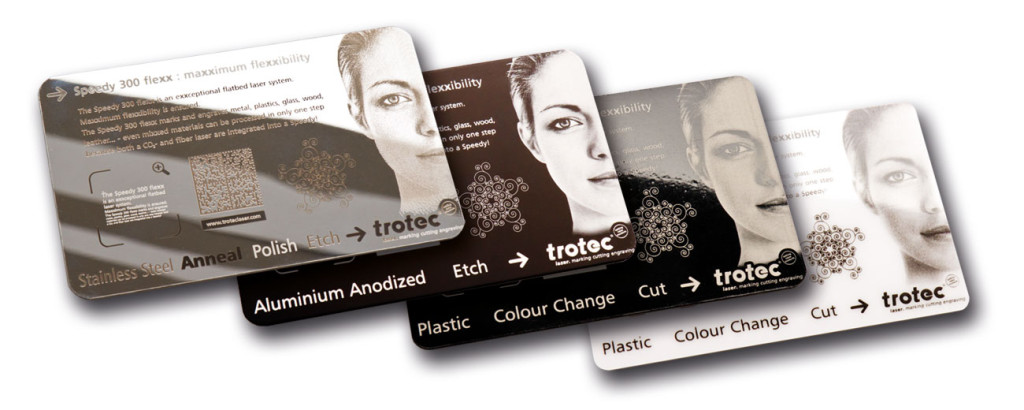Common laser types available in the market
The laser machines available in the market mainly differ by the laser source they use. We mainly talk about CO2 lasers, fiber lasers and vanadate lasers. Each laser type has its own advantages and disadvantages and is suited for use on different materials.
CO2 lasers (gas lasers)
CO2 laser are gas lasers that are based on a carbon dioxide gas mixture, which is stimulated electrically. With a wavelength of 10.6 micrometers, they are mainly suited for working on non-metallic materials and on most plastics. CO2 lasers have a relatively high efficiency and feature a very good beam quality. They are therefore the most widely used laser types.
Suited for the following materials: Wood, acrylic, glass, paper, textiles, plastics, foils & films, leather, stone
Fiber lasers
Fiber lasers belong to the solid state laser group. They generate a laser beam by means of the so-called seed laser and amplify it in specially designed glass fibers, which are supplied with energy via pump diodes. With a wavelength of 1.064 micrometers, fiber lasers produce an extremely small focal diameter; as a result their intensity is up to 100 times higher than that of CO2 lasers with the same emitted average power.
Fiber lasers are optimally suited for metal marking by way of annealing, for metal engraving, and for high-contrast plastic markings. Fiber lasers are generally maintenance-free and feature a long service life of at least 25,000 laser hours.
Suited for the following materials: Metals, coated metals, plastics
Nd:YAG, Nd:YVO (crystal lasers)
Like fiber lasers, crystal lasers belong to the solid-state lasers. Nowadays, lasers for marking applications are pumped by diodes (in the past by flash lamps). The most common laser types in this category are Nd:YAG (neodymium-doped yttrium aluminum garnet) and Nd:YVO (neodymium-doped yttrium ortho-vanadate), named after the doping element neodymium and the carrier crystal. With 1.064 micrometers, crystal lasers have the same wavelength as fiber lasers and are thus also suited for marking metals and plastics.
Unlike fiber lasers, these laser types include the relatively expensive pump diodes, which are wearing parts. They must be replaced after approx. 8,000 to max. 15,000 laser hours. The crystal itself also has a shorter service life than a fiber laser.
Suited for the following materials: Metals, coated metals, plastics, to some extent also for ceramic


